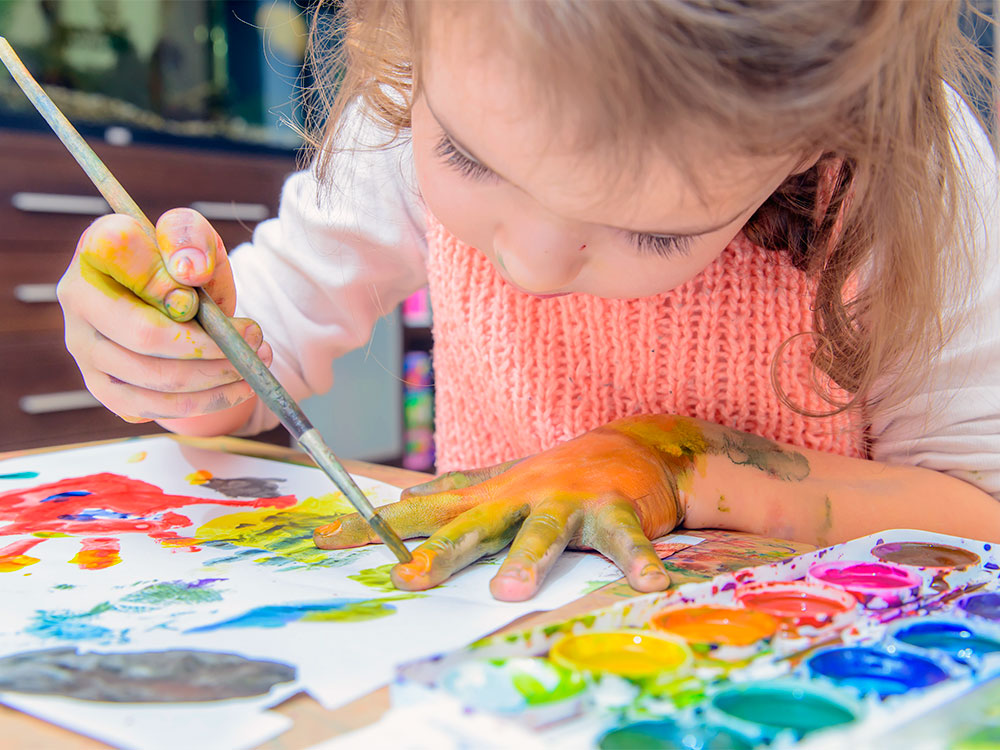In a rapidly changing world, the education system must evolve to prepare children for the challenges and opportunities they will encounter. While traditional subjects like math and science are crucial, it is equally vital to foster creativity in young learners. By incorporating creative activities into education, we unlock their imagination, cultivate innovative thinking, and empower them to become well-rounded individuals.
Creativity provides an outlet for young children to express their unique thoughts, emotions, and experiences. By engaging in creative activities such as painting, storytelling, or music, children can communicate in ways that may be challenging through traditional academic subjects. This avenue for self-expression helps build confidence, strengthens communication skills, and fosters a sense of identity and individuality.
Creativity encourages children to think outside the box, explore new ideas, and find innovative solutions to problems. By engaging in open-ended creative tasks, such as building with blocks, designing imaginary worlds, or experimenting with art materials, young minds develop critical thinking skills, learn to analyse situations from multiple perspectives, and enhance their ability to solve complex problems.
Creative activities stimulate various cognitive processes in young children. When engaged in imaginative play, they develop language skills, memory, and spatial awareness. Drawing or sculpting fosters fine motor skills and hand-eye coordination. Music and dance promote rhythm, pattern recognition, and mathematical thinking. These experiences lay the foundation for well-rounded cognitive development and help children approach learning with curiosity and enthusiasm.
Creativity offers opportunities for collaboration and teamwork, encouraging young learners to interact and share ideas with their peers. Group projects, theatre performances, or collaborative art activities enable children to learn how to work together, compromise, and appreciate diverse perspectives. These experiences foster empathy, communication, and problem-solving skills, essential for navigating social interactions in school and beyond.

Incorporating creativity into education nurtures a love for learning in young children. By encouraging them to explore their interests, follow their passions, and pursue their creative inclinations, we ignite a lifelong curiosity for knowledge. Whether it’s delving into literature, engaging in scientific experiments, or participating in artistic pursuits, these experiences lay the foundation for a thirst for knowledge that extends beyond traditional academic subjects.
Bridging the Gap Between Subjects:
Creativity has the power to bridge gaps between different subjects and disciplines. It allows children to see connections between seemingly unrelated concepts and develop a holistic understanding of the world. By integrating creative activities into various subjects, such as incorporating storytelling into history lessons or using art to explore scientific concepts, children gain a deeper appreciation for the interconnectedness of knowledge and develop a multidimensional understanding of their studies.

Fostering Innovation and Adaptability:
In a rapidly changing world, creativity is crucial for fostering innovation and adaptability. By nurturing creativity in young children, we equip them with the skills needed to navigate the challenges of the future. Creative thinkers are more likely to embrace change, approach problems with flexibility, and find innovative solutions. These qualities are essential for success in the workplace and in life.
Incorporating creativity into education for young children is not a luxury but a necessity. Let us embrace creativity as an integral part of education, recognizing its profound impact on the holistic development of young minds.

As educators, parents, and society as a whole, it is our collective responsibility to create an environment that nurtures and celebrates creativity. We must provide ample opportunities for children to engage in imaginative play, explore various art forms, experiment with scientific concepts, and think critically. By incorporating creative activities into educational frameworks, we unlock the limitless potential within each child, fostering their individuality, enhancing their learning experience, and preparing them for the dynamic world they will inherit.
Let us encourage curiosity, embrace diverse forms of expression, and celebrate the unique talents and perspectives of young children. By valuing and prioritising creativity in education, we empower the next generation to become innovative thinkers, compassionate problem-solvers, and lifelong learners.








